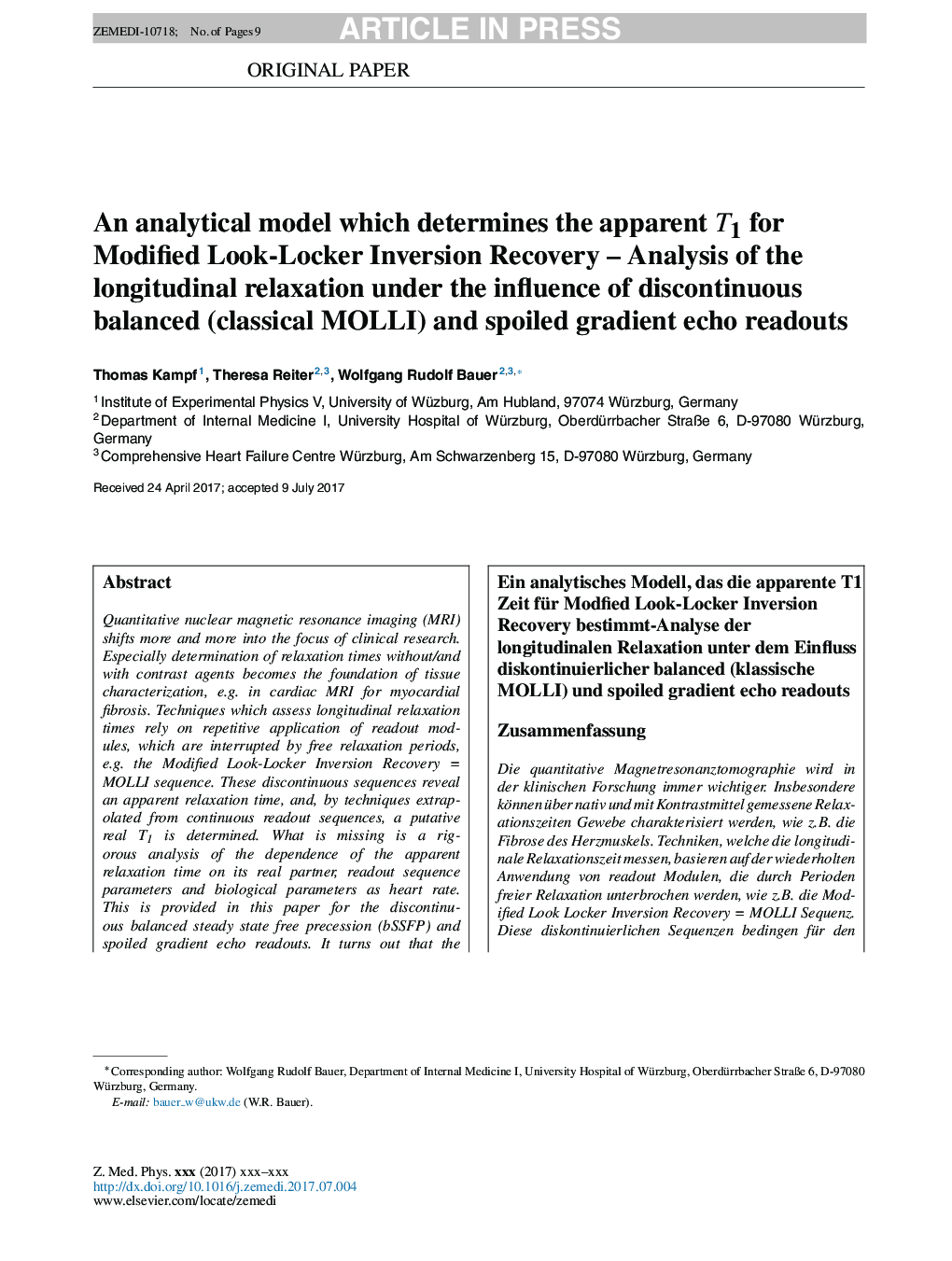| Article ID | Journal | Published Year | Pages | File Type |
|---|---|---|---|---|
| 8253164 | Zeitschrift für Medizinische Physik | 2018 | 9 Pages |
Abstract
Quantitative nuclear magnetic resonance imaging (MRI) shifts more and more into the focus of clinical research. Especially determination of relaxation times without/and with contrast agents becomes the foundation of tissue characterization, e.g. in cardiac MRI for myocardial fibrosis. Techniques which assess longitudinal relaxation times rely on repetitive application of readout modules, which are interrupted by free relaxation periods, e.g. the Modified Look-Locker Inversion Recovery = MOLLI sequence. These discontinuous sequences reveal an apparent relaxation time, and, by techniques extrapolated from continuous readout sequences, a putative real T1 is determined. What is missing is a rigorous analysis of the dependence of the apparent relaxation time on its real partner, readout sequence parameters and biological parameters as heart rate. This is provided in this paper for the discontinuous balanced steady state free precession (bSSFP) and spoiled gradient echo readouts. It turns out that the apparent longitudinal relaxation rate is the time average of the relaxation rates during the readout module, and free relaxation period. Knowing the heart rate our results vice versa allow to determine the real T1 from its measured apparent partner.
Related Topics
Physical Sciences and Engineering
Engineering
Biomedical Engineering
Authors
Thomas Kampf, Theresa Reiter, Wolfgang Rudolf Bauer,
